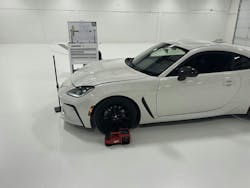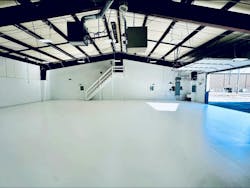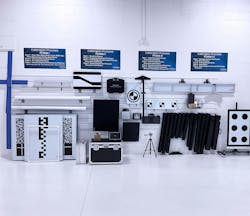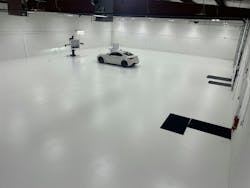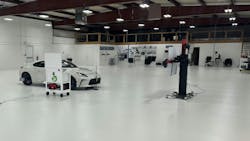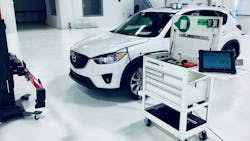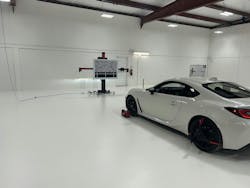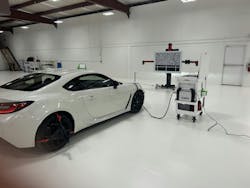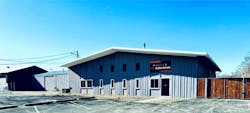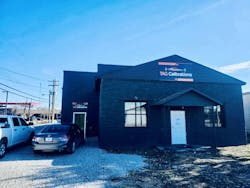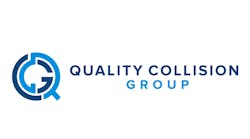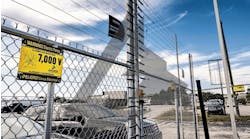ADAS calibration has rapidly become a critical step in the collision repair process.
Data from Car ADAS Solutions, LLC shows that 92 percent of all new vehicles manufactured in 2022 had at least one ADAS component, and somewhere between 42 and 45 percent of all vehicles entering a collision repair facility needed an ADAS calibration.
In an age when cars are more complex than ever before, Greg Peeters, CEO of Car ADAS Solutions, says modern collision shops have to be able to calibrate ADAS.
“Even the smallest of shops, too many times, have to have those systems restored,” Peeters says. “The accuracy of aiming a sensor is more necessary now than it ever has been, and it's more relevant to avoiding an accident that it's ever been before.”
Though it might be tempting to find a third-party vendor to perform your ADAS calibrations, Peeters says investing in the ability to do that work in-house can be a huge boon for your shop and help you ensure that every calibration is being performed correctly every single time.
Where to put a calibration center
Car ADAS Solutions works with collision shops across the country to help them develop their own ADAS calibration facilities. Whether it’s an add-on to your existing collision repair shop or you’re building a brand-new space, Peeters says there are several things a calibration center must have to operate effectively.
First, and possibly most importantly, is having enough space to perform calibrations. Peeters says a 60’ x 40’ space is the bare minimum needed to be able to perform calibrations on most European, Asian and domestic makes.
“When you change the dimensions of that stall, you're restricting the calibrations you can do,” he says.
Second is the floor. Unlike other parts of the collision repair process, most ADAS calibration work takes place on the floor. Peeters says the floor becomes a whiteboard of sorts for technicians, where they’re able to transfer angles and other measurements directly below the components.
In addition, level floors are essential to proper calibration. Peeters says his company levels floors within a variance of 8 millimeters. Any more variation than that can throw off a calibration.
“The accuracy of what you do is based off the level of your floor,” he says. “A fraction of a degree every inch in these leveling calibrations is critical to the functionality of some of those components. There is no calibration system that makes up for unlevel floors.”
Having a leveled, smooth floor that's coated with a non-glossy finish is critical to a successful calibration center. Also essential is having correct lighting. An ADAS calibration center shouldn’t have any windows, and Peeters says they help clients lay out specific lights in a very particular manner to make sure there aren’t any unnecessary reflections.
Making sure that there are no reflective materials in range of a vehicle’s sensor is also important. And, lastly, Peeters says anything metal has to be out of the line of sight of ADAS components – metal can attract radar signals and throw off the calibration.
“During a static calibration, everything has to be perfect for that camera or sensor to be calibrated to an OEM specification,” he says. “Every fraction of a degree of error in a calibration is transferred to feet and yards of stopping distance that isn't achieved.”
Extra bay or new space?
Building an in-house option to perform ADAS calibrations is not a decision to be made lightly.
Andy Tylka, owner and CEO of Tag Auto Group and Tag Calibrations, says shops need to understand their book of business and really know if investing in the amount of space, equipment and training will provide a worthwhile ROI.
“You have to understand the technology and the level of investment ADAS calibration takes. If you don't have the right environment, you've got to price out what it's going to cost to get that,” Tylka says. “If you’re not able to do the vehicle per OEM standard and be able to make a solid ROI, then you should send your vehicles out.”
However, if it does make sense financially for your shop, Tylka says there is plenty of opportunity out there to establish yourself as a go-to resource for ADAS calibrations.
“There’s a major lack of consistency with everyone who’s doing ADAS calibrations,” Tylka says. “There's a standard out there. ADAS calibrations aren’t subjective, but when I saw other people had different standards, that's when I realized I needed to create our own calibration centers.”
The biggest dilemma facing collision shops when considering adding on a calibration center is whether to attach it to an existing collision facility to build it as an entirely separate entity.
Peeters usually tells his clients that making their calibration centers their own separate entities — not just a separate building, but its own business all together — has multiple advantages.
First off, most modern shops are maxed out on space, and finding an additional 2,400 square feet for calibrations can prove to be quite challenging. On top of that, the space needed for calibrations is so much different than what the rest of the collision shop needs. Oftentimes, that leads to shops losing productivity and ultimately hurting their bottom line.
“There are shops that are able to add a calibration bay on to their shops, and God love those guys,” Peeters says, “but more often than not, it's tried in too small a space and it's not successful.”
Tylka says he didn’t even consider adding a bay on to his existing shops. With 14 collision repair centers spread out across three different regions, it made much more sense to build fewer, strategically placed calibration centers.
“I knew that I couldn't execute the vision properly by putting a calibration center in each of my 14 shops; that would be just way too difficult. My shops are in three different regions, so I put up three different centers at the time to service all my shops.”
And that’s where the second benefit to having independent calibration centers comes in. There’s a hunger in the market for high-quality, consistent ADAS calibrations. Peeters says setting up your calibration centers as an entity independent from your collision shop, it helps make that center more attractive to your competition.
“If a competitor has to bring a vehicle to your collision shop for calibration, I'd be very nervous that you'd be picking my work apart,” Peeters says. “If I bring it to a separate calibration center, I have a little more comfort in that.”
Tylka had that in mind when he built up his calibration centers. There was a definite need in his market, and as a collision shop owner himself, he was able to build his calibration facilities in way to better meet the needs of his shops and others in the area.
“When I opened up my own facility, I wanted to build a business model that revolved around what a collision shop would want in a calibration center,” Tylka says. “I got input from other shops in the area, and I was able to build a calibration center based off of what the need is in the industry.”
However, it wasn’t as simple as “Build it, and they will come.” There was a need, yes, but Tylka says he needed to get buy in from the collision shops in his area — his own included — in the new calibration facilities.
“The biggest challenge we had was to educate the shops in our area, both our own and our competitors. Many shops see calibration as an afterthought,” he says. “We spent so much time educating and giving surrounding shops the tools to see how a calibration should be done.”
Peeters says Car ADAS Solutions and other companies like it are able to help shops determine what their specific market is like and if this kind of model would be a fit.
“In some markets, the competition is fierce and this model won't work at all. Every market is unique,” Peeters says. “You need to take your neighboring shop owners out to breakfast and ask them if they, honestly, would use your calibration center.”
If there is appetite for it, though, Tylka says having a calibration center can be a game-changer for your shop.
“People saw the same concern of the inconsistency of ADAS calibrations, and so the fact that we built our model around solving those problems, we’re capturing quite a bit of the market,” Tylka says. “And we haven't lost a customer yet.”

